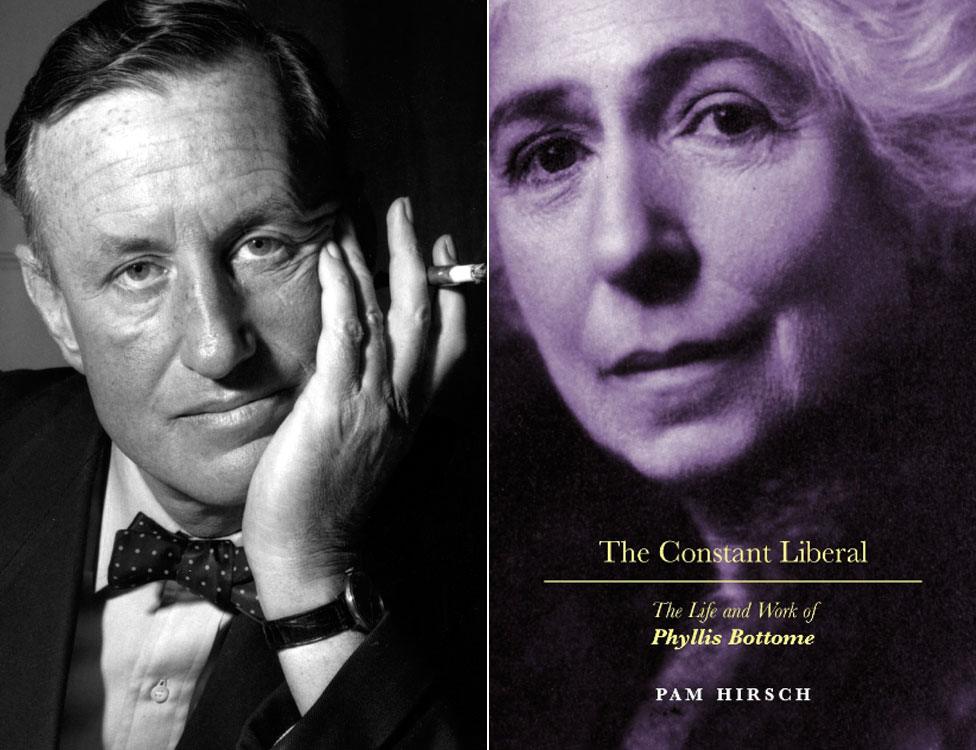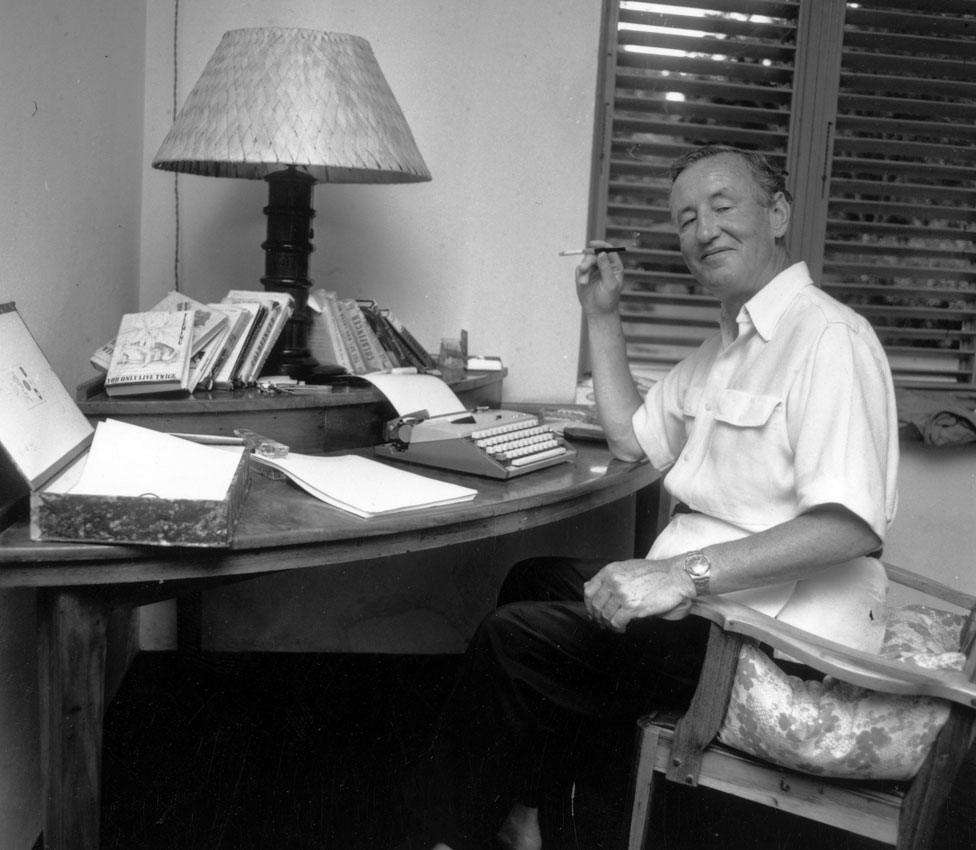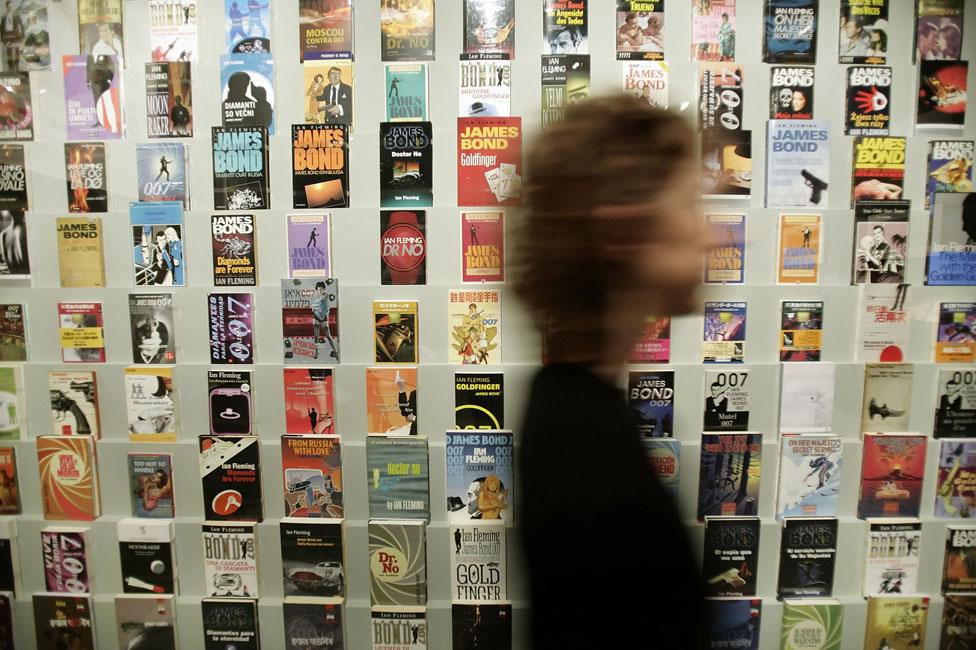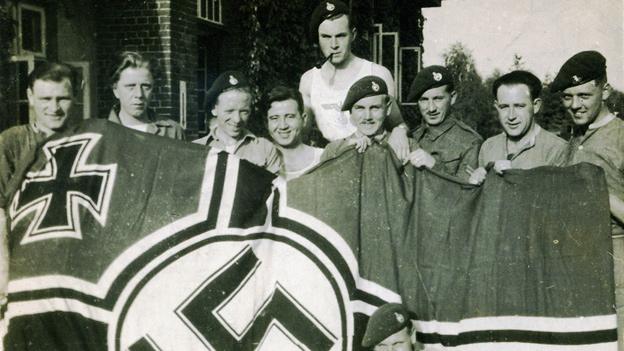Did a woman inspire Ian Fleming's James Bond?
- Published

The author of Bottome's biography says the young Ian Fleming was "deeply troubled"
A BBC Radio 4 documentary to be aired this week casts a fascinating light on the early days of Ian Fleming and his most famous creation, James Bond. Its presenter, News Quiz host Miles Jupp, explains more.
James Bond has gripped our national imagination since he emerged from the scent and smoke and sweat of a French casino at three in the morning in 1953's Casino Royale.
The 30-something British agent with the lock of dark hair, the cruelly winning way with the ladies and the licence to kill has become one of Britain's most iconic fictional creations - and, thanks to a multi-million pound film franchise, one of our most successful cultural exports.
But was James Bond invented not by Ian Fleming, but by a lady novelist with a shock of white hair and the remarkable name Phyllis Bottome?
That's the extraordinary claim I explore in a documentary for Radio 4 titled The Woman Who Invented James Bond?

A fictional spy called Mark Chalmers may have provided the template for James Bond

Documentary presenter Miles Jupp presents Radio 4's The News Quiz and has appeared in Rev
Phyllis Bottome is not much remembered now, but she was a widely respected and prolific author in the early 20th Century.
She published her first novel aged just 20 and kept at it, producing well-reviewed books every year or two for more than half a century.

Fleming did his writing at his Goldeneye home in Jamaica
Her most famous novel, The Mortal Storm, was an attempt to wake British readers to the desperate plight of Jews in Germany. Published in 1938, it became a Hollywood film starring James Stewart two years later.
In 1946, Bottome published a novel called The Life Line. The spy writer Nigel West believes it is nothing less than a smoking gun.
"In 1946, Phyllis Bottome writes a James Bond book," West says. "He's not called James Bond, he's called Mark Chalmers, but he has every characteristic of James Bond."
Chalmers, the hero of Bottome's novel, is a 36-year-old, dark-haired master at Eton who is signed up to work for British intelligence by a friend, Reggie, who works at the Foreign Office.
After a meeting with "B", the head of British Intelligence, he is despatched to the continent with a mission to communicate with a British sleeper agent and a suicide pill in case it all goes wrong.
Chalmers is a keen aficionado of mountain sports, enthusiastic about fine food and wine and has an eye for a pretty girl. He also speaks fluent French and German.

Fleming's books, pictured here on display in 2008, have sold in their millions
Seven years later, the world would be introduced to a character named James Bond.
He's in his late thirties. He is sent to the continent after a meeting with "M", the head of British intelligence.
He is a keen aficionado of mountain sports, enthusiastic about fine food and wine and has an eye for a pretty girl. He also speaks fluent French and German.
There's nothing necessarily sinister about two books appearing some years apart with similar characters and themes.
But Fleming knew Phyllis Bottome. Indeed, the summer after The Life Line was published, Bottome and her husband Ernan Forbes Dennis holidayed in Goldeneye, Fleming's Jamaican villa.
The connection between Fleming and the Forbes Dennises went back to 1926 when Fleming was sent to Austria in some disgrace,
There he was enrolled in the Tannerhof, a school Phyllis and her husband ran in the Austrian Alps.
Fleming learned to ski, speak French and also, with Phyllis's encouragement, wrote his first short story.
'Hugely important'
Bottome's husband had been a spy and served as SIS station chief in Marseilles. It was an intoxicating atmosphere for the young Fleming.
"The Forbes Dennises were hugely important for Ian's development," says John Pearson, Fleming's biographer.
"As he said himself, without Phyllis and Ernan he would never have been able to get going and do his thing."
In a letter to the Sunday Times in 1962, Fleming generously acknowledged the positive influence that Phyllis Bottome and her husband had on him when he was a wayward youth.
But did his debt to Bottome go deeper than that? Did he take the idea for James Bond from his old mentor? It's a controversial thesis.
'Thief and victim'
Nigel West argues that the relationship between Fleming and Bottome is that of "thief and victim". But if so, the thief and victim seemed to remain on friendly terms until Phyllis's death in 1963.
Pam Hirsch, author of The Constant Liberal: The Life and Work of Phyllis Bottome, says the title of The Life Line was emblematic of her relationship with the young Fleming.
"Phyllis and her husband Ernan were a lifeline for a deeply troubled young man who might not have actually survived if he hadn't had all their care, their love, and their writerly attention as well."
Hirsch is reluctant to suggest Phyllis "invented James Bond". But she does say "she sort of invented Ian Fleming the writer".
Fleming's novels have sold millions of copies since 1953. Phyllis Bottome's The Life Line is not currently in print.
But could it have planted the seed that would flower into James Bond?
The Woman Who Invented James Bond?, presented by Miles Jupp, is on BBC Radio 4 at 10:30 GMT on Saturday 10 December.

Follow us on Facebook, external, on Twitter @BBCNewsEnts, external, or on Instagram at bbcnewsents, external. If you have a story suggestion email entertainment.news@bbc.co.uk, external.
- Published6 March 2013
